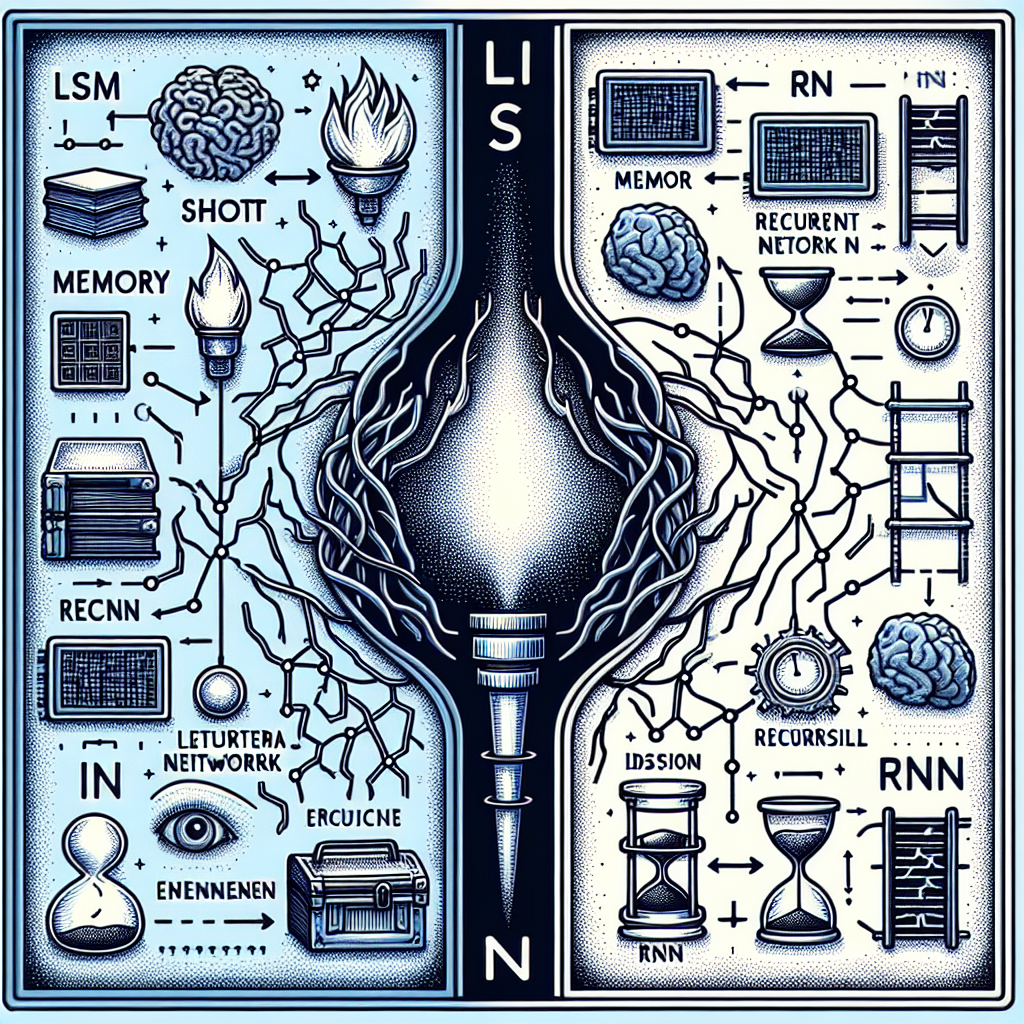Your cart is currently empty!
LSTM vs. RNN: Understanding the Key Differences and Advantages

Long Short-Term Memory (LSTM) and Recurrent Neural Networks (RNN) are two popular types of neural networks used in the field of deep learning. Both models are designed to handle sequential data, such as time series or natural language, but they have distinct differences in their architecture and functionality. In this article, we will explore the key differences and advantages of LSTM and RNN.
RNN is a type of neural network that is designed to handle sequential data by storing and processing information in a cyclic manner. It is able to remember past information and use it to make predictions about future data points. However, RNNs have a limitation known as the vanishing gradient problem, which makes it difficult for the network to learn long-range dependencies in the data.
LSTM, on the other hand, is a more advanced version of RNN that addresses the vanishing gradient problem by introducing a mechanism called “gates.” These gates allow the model to selectively remember or forget information at each time step, which enables it to capture long-range dependencies in the data more effectively.
One key difference between LSTM and RNN is their ability to handle long-term dependencies in sequential data. LSTM is better equipped to remember important information over longer periods of time, making it more suitable for tasks that require modeling complex relationships in the data. In contrast, RNNs may struggle to learn these long-range dependencies due to the vanishing gradient problem.
Another advantage of LSTM over RNN is its ability to handle gradient explosions, which occur when the gradients in the network become too large and cause the model to diverge during training. LSTM’s gating mechanism helps to prevent gradient explosions by controlling the flow of information through the network, making it more stable and reliable for training deep neural networks.
In summary, LSTM and RNN are both powerful tools for processing sequential data, but LSTM has several advantages over RNN in terms of handling long-term dependencies and preventing gradient explosions. When working on tasks that require modeling complex relationships in the data, such as natural language processing or time series forecasting, LSTM is often the preferred choice due to its advanced architecture and improved performance.
#LSTM #RNN #Understanding #Key #Differences #Advantages,lstm

Leave a Reply